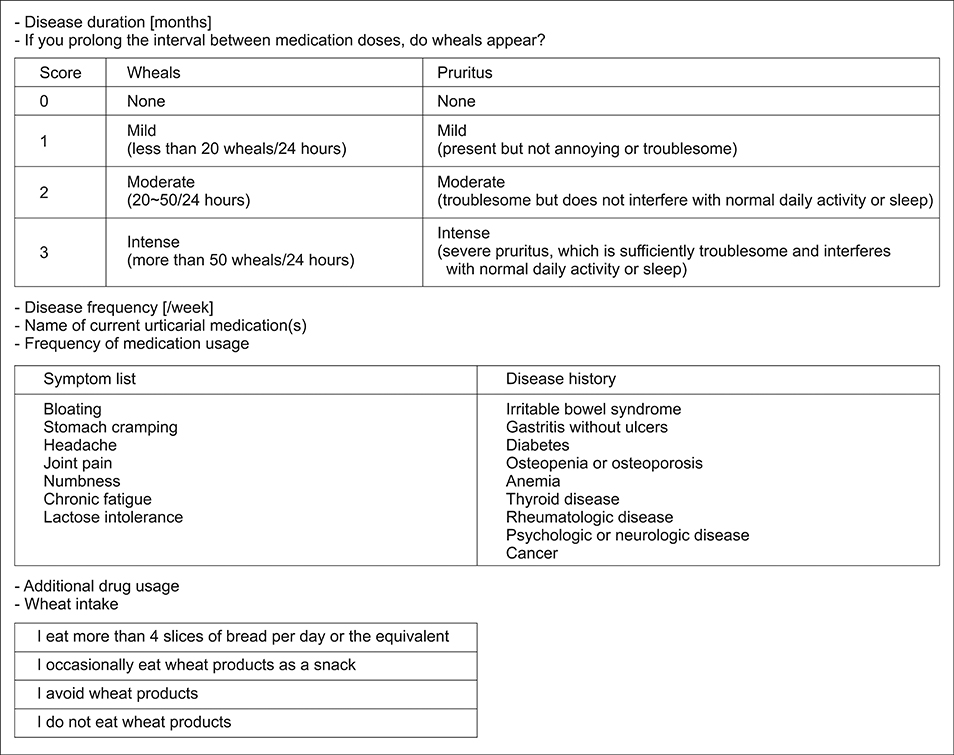Ann Dermatol.
2019 Oct;31(5):585-588. 10.5021/ad.2019.31.5.585.
A Pilot Study about Possible Gluten Sensitivity in Korean Urticaria Patients
- Affiliations
-
- 1Korea University College of Medicine, Seoul, Korea. jhjeonmd@gmail.com
- 2Department of Dermatology, Korea University Guro Hospital, Seoul, Korea.
- KMID: 2456240
- DOI: http://doi.org/10.5021/ad.2019.31.5.585
Abstract
- No abstract available.
Figure
Reference
-
1. Humbert P, Pelletier F, Dreno B, Puzenat E, Aubin F. Gluten intolerance and skin diseases. Eur J Dermatol. 2006; 16:4–11.2. Cummins AG, Roberts-Thomson IC. Prevalence of celiac disease in the Asia-Pacific region. J Gastroenterol Hepatol. 2009; 24:1347–1351.
Article3. Zuberbier T, Aberer W, Asero R, Abdul Latiff AH, Baker D, Ballmer-Weber B, et al. The EAACI/GA2LEN/EDF/WAO guideline for the definition, classification, diagnosis and management of urticaria. Allergy. 2018; 73:1393–1414.4. Powell RJ, Leech SC, Till S, Huber PA, Nasser SM, Clark AT. BSACI guideline for the management of chronic urticaria and angioedema. Clin Exp Allergy. 2015; 45:547–565.
Article5. Green PH, Cellier C. Celiac disease. N Engl J Med. 2007; 357:1731–1743.
Article6. Anderson RP. Coeliac disease. Aust Fam Physician. 2005; 34:239–242.7. Di Sabatino A, Volta U, Salvatore C, Biancheri P, Caio G, De Giorgio R, et al. Small amounts of gluten in subjects with suspected nonceliac gluten sensitivity: a randomized, double-blind, placebo-controlled, cross-over trial. Clin Gastroenterol Hepatol. 2015; 13:1604–1612.e3.
Article8. Bruins MJ. The clinical response to gluten challenge: a review of the literature. Nutrients. 2013; 5:4614–4641.
Article9. Gwee KA, Ghoshal UC, Chen M. Irritable bowel syndrome in Asia: Pathogenesis, natural history, epidemiology, and management. J Gastroenterol Hepatol. 2018; 33:99–110.
Article10. Catassi C, Fabiani E, Iacono G, D'Agate C, Francavilla R, Biagi F, et al. A prospective, double-blind, placebo-controlled trial to establish a safe gluten threshold for patients with celiac disease. Am J Clin Nutr. 2007; 85:160–166.
Article
- Full Text Links
- Actions
-
Cited
- CITED
-
- Close
- Share
- Similar articles
-
- Emergence of Celiac Disease and Gluten-related Disorders in Asia
- Non-celiac Gluten Sensitivity
- A Case of Gluten Allergy in a 4-Year-Old Boy With Recurrent Urticaria
- Dietary Triggers in Irritable Bowel Syndrome: Is There a Role for Gluten?
- Symptomatic improvement with gluten restriction in irritable bowel syndrome: a prospective, randomized, double blinded placebo controlled trial



